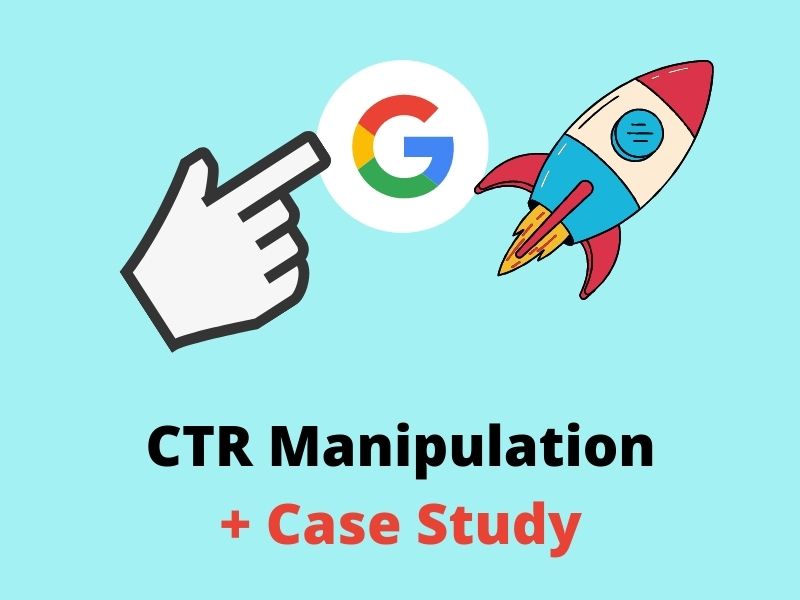Understanding CTR Control for Effective Digital Advertising
In the swiftly evolving landscape of digital marketing, understanding click-through price (CTR) adjustment has actually become a pivotal method for enhancing audience engagement and driving conversions. By employing methods such as enhancing content, using engaging visuals, and leveraging data analytics, marketing professionals can dramatically affect user habits. Nonetheless, the subtleties of reliable CTR improvement extend past standard methods, disclosing an intricate interplay of consumer psychology and technological improvements. As we check out these sophisticated methods, the implications for future advertising campaigns warrant closer examination. What strategies will show most effective in this vibrant atmosphere?
Comprehending Click-Through Rate
Click-Through Price (CTR) is a vital metric in digital advertising that gauges the efficiency of on-line advertising and web content approaches. It is computed by splitting the number of clicks a promotion or web link receives by the overall number of perceptions, after that increasing by 100 to reveal it as a percentage (CTR Manipulation Press Release). A high CTR indicates that the web content resonates well with the target audience, while a reduced CTR may recommend problems with targeting, messaging, or total appeal
Comprehending CTR is vital for maximizing digital campaigns. Numerous factors affect CTR, consisting of ad positioning, design, and copy. A well-crafted call-to-action (CTA) can dramatically enhance click-through rates by motivating individuals to engage with the web content. In addition, audience segmentation plays a crucial role; customized content is most likely to capture attention and drive clicks.

Significance of CTR in Advertising
In the realm of digital marketing, the importance of CTR can not be overstated, as it acts as an important indicator of project efficiency and target market engagement. A high click-through price normally symbolizes that the advertising message reverberates with the target audience, triggering them to take activity. This link is necessary for both brand awareness and conversion rates, as it reflects the effectiveness of the advertising and marketing technique employed.
Moreover, CTR plays an important role in establishing the general ROI of advertising and marketing campaigns. Advertisers can gauge which elements, such as advertisement copy, visuals, or targeting, succeed in capturing focus and driving clicks (CTR Manipulation Press Release). By assessing CTR, marketers can optimize their projects and allocate resources better, guaranteeing optimal impact
Furthermore, CTR serves as a criteria for contrasting various advertising channels and techniques. Whether via email campaigns, social media, or pay-per-click advertising, comprehending CTR can aid marketers determine one of the most effective approaches and enhance overall advertising approach.
Techniques for Enhancing CTR
While different factors affect click-through prices, implementing strategic techniques can dramatically improve their effectiveness. One of the most impactful approaches is enhancing headings and meta summaries. Crafting compelling, action-oriented headings that resonate with your target audience can capture interest and drive clicks. Furthermore, making sure that meta descriptions are succinct yet insightful encourages individuals to involve additionally with your web content. a knockout post
Another technique includes using captivating visuals. Including appropriate images, infographics, or video clips can raise the chance of involvement, as these aspects can break up message and give an enticing user experience. A/B screening different formats and layouts can expose what resonates most with your audience.

Finally, guaranteeing that your web content is mobile-friendly is important. A receptive design not just enhances individual experience but additionally increases the possibilities of greater click-through prices on smart phones. By using these techniques thoughtfully, marketers can properly improve CTR and drive even more web traffic to their electronic possessions.
Evaluating CTR Efficiency

To assess CTR performance, it is vital to sector data by different parameters, such as market elements, tool types, and web traffic sources. This segmentation supplies deeper understandings into which target market segments respond best to particular messages. A/B screening can likewise be used to compare various variations of promotions or touchdown web pages, allowing marketing experts to refine their technique based on empirical evidence.
It is essential to contextualize CTR data within wider project objectives, making sure that high CTR does not come at the expenditure of conversion prices. Ultimately, an extensive evaluation of CTR efficiency equips marketing experts to make data-driven choices, maximize content, and improve general campaign efficiency.
Future Trends in CTR Control
As digital marketing continues to advance, the manipulation of Click-Through Rates (CTR) is poised to undertake substantial adjustments driven by innovations in modern technology and shifts in consumer actions. One prominent trend is the assimilation of artificial intelligence and machine discovering right into marketing approaches. These modern technologies enable marketing professionals to examine vast quantities of information, permitting individualized content that resonates better with target market, hence boosting CTR.
In addition, the rise of voice and aesthetic search is forming exactly how online marketers approach CTR adjustment. Maximizing content for voice search calls for a focus on all-natural language and question-based inquiries, while visual search needs high-grade images and engaging multimedia material. Both methods existing new website link possibilities to capture attention and drive clicks.
Additionally, personal privacy guidelines are prompting marketing experts to rethink their approaches. As consumers end up being much more mindful of data personal privacy, transparent and honest techniques will be necessary for keeping trust, which can affect CTR favorably.
Lastly, the expanding relevance of mobile optimization can not be overstated. As mobile usage remains to increase, ensuring that digital web content is mobile-friendly will be crucial in optimizing CTR in the future. Embracing these patterns will certainly be essential for online marketers aiming to stay affordable in an ever-changing landscape.
Conclusion
Finally, mastering click-through rate control is critical for optimizing digital advertising strategies. By using strategies such as engaging headlines, engaging visuals, and targeted A/B testing, online marketers can dramatically boost audience interaction and conversion prices. Continual evaluation of CTR efficiency promotes educated decision-making, allowing marketers to adapt to changing consumer actions. Welcoming arising fads and innovations will certainly better strengthen initiatives in CTR adjustment, inevitably causing enhanced campaign efficiency and raised return on financial investment.